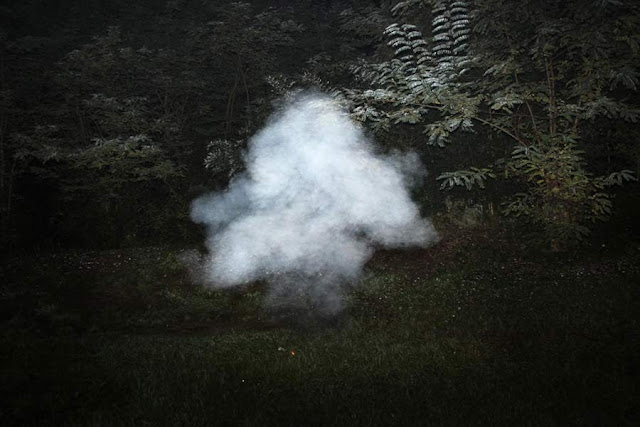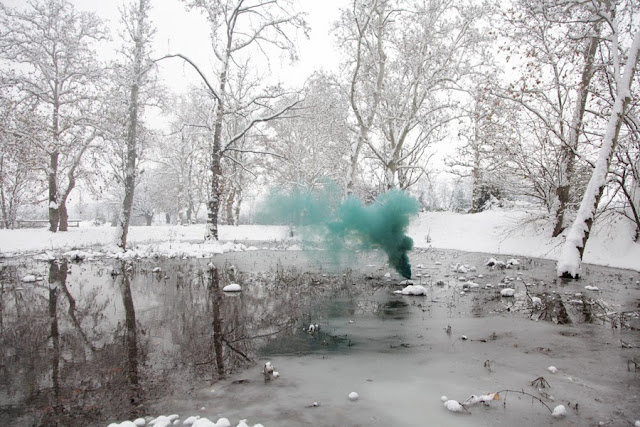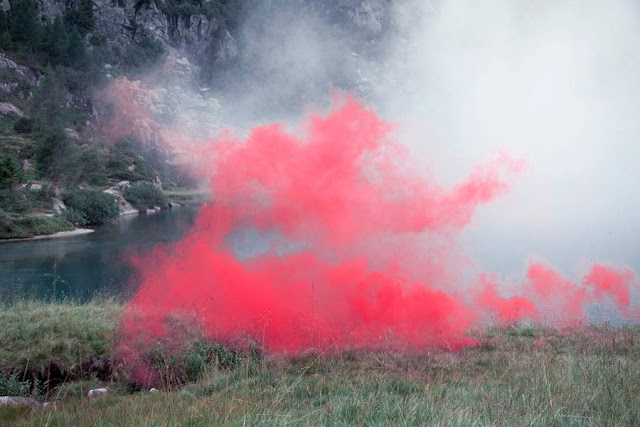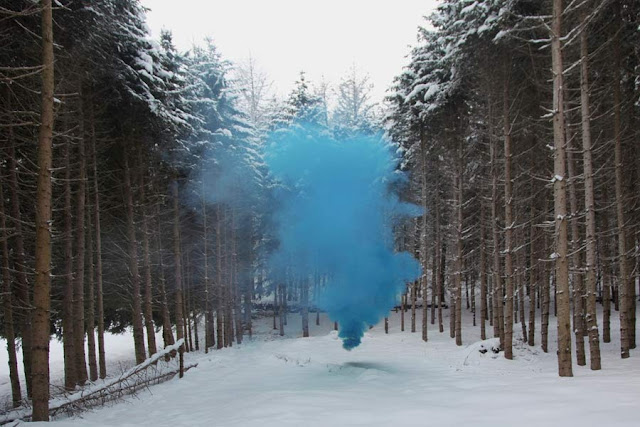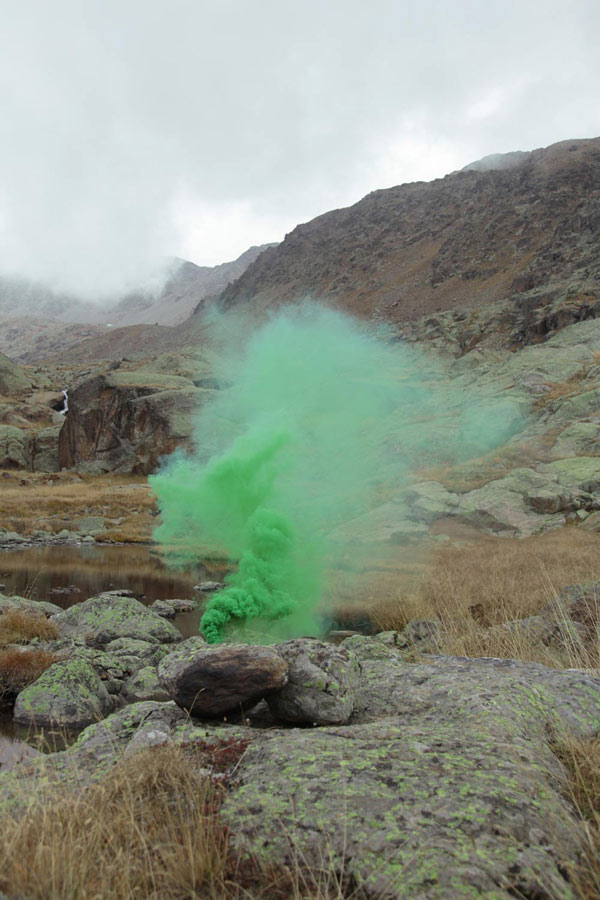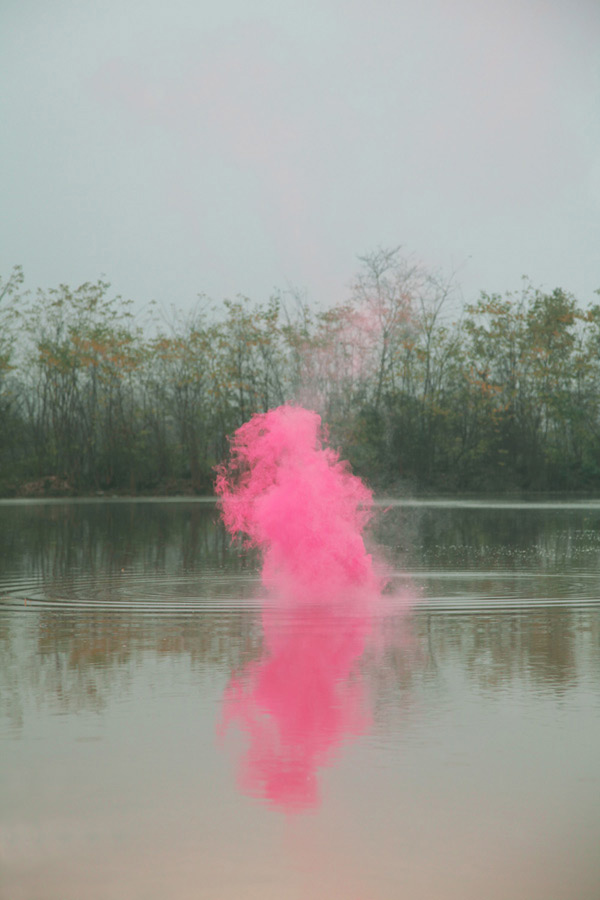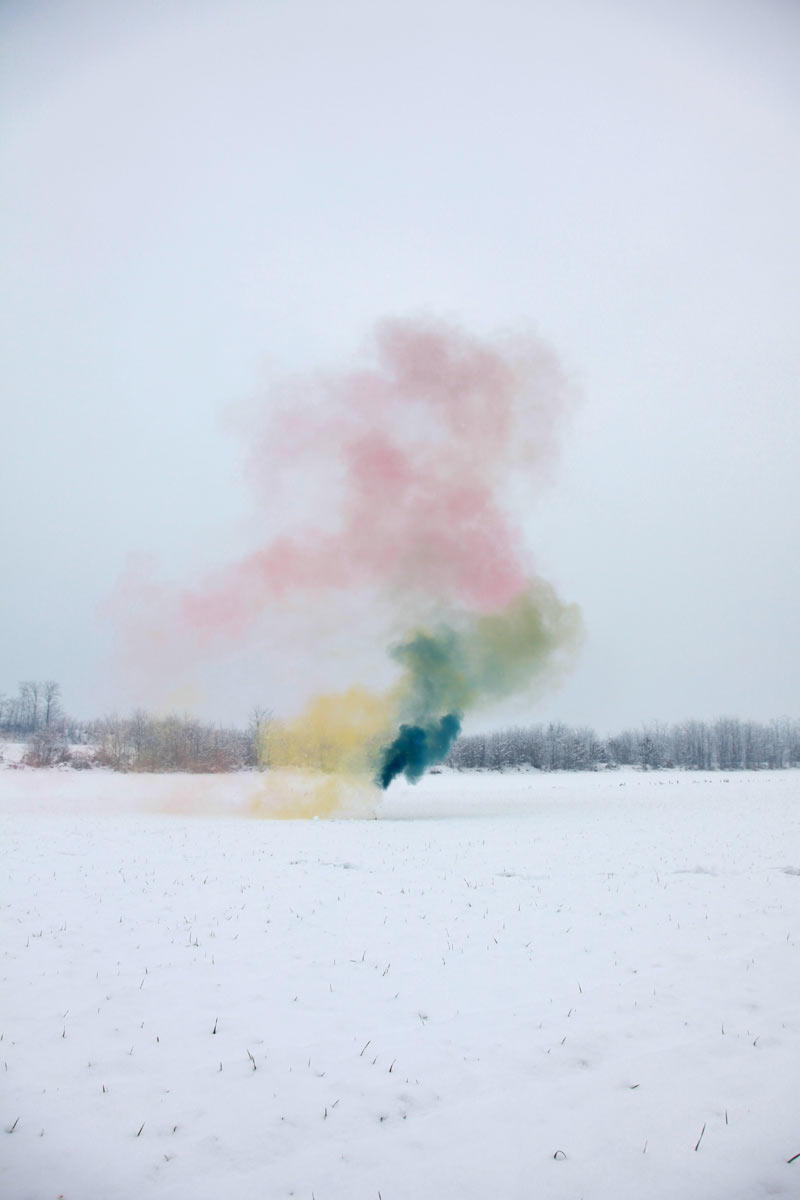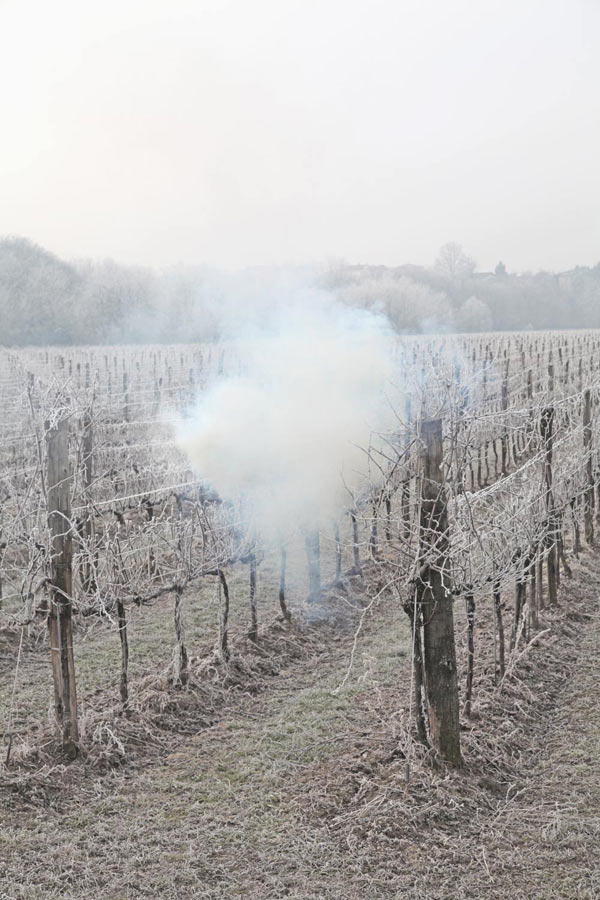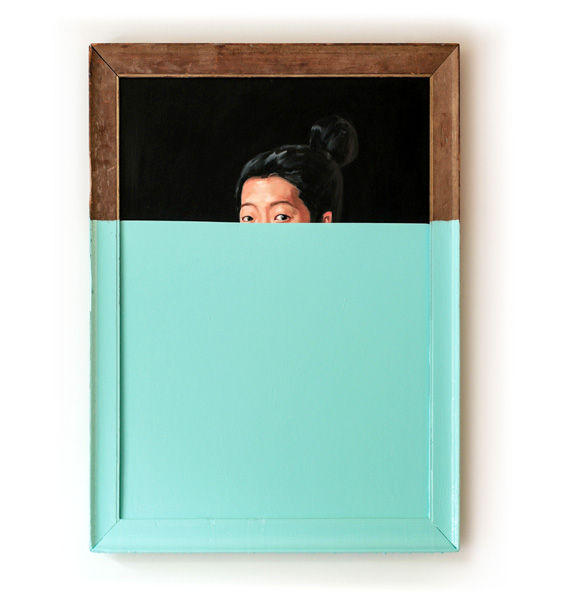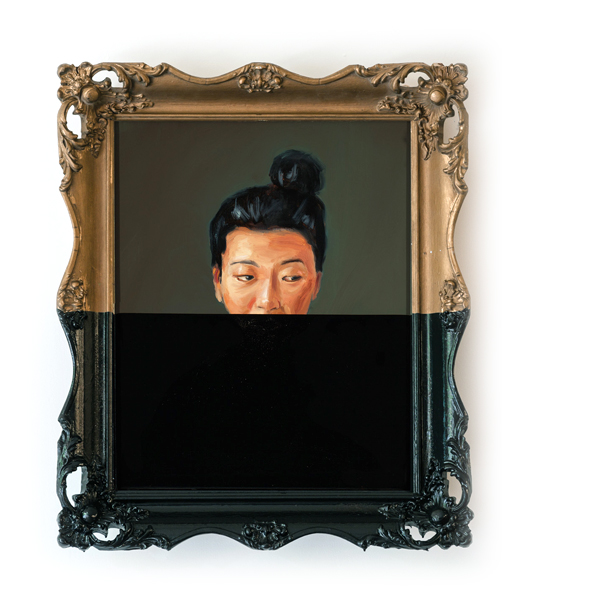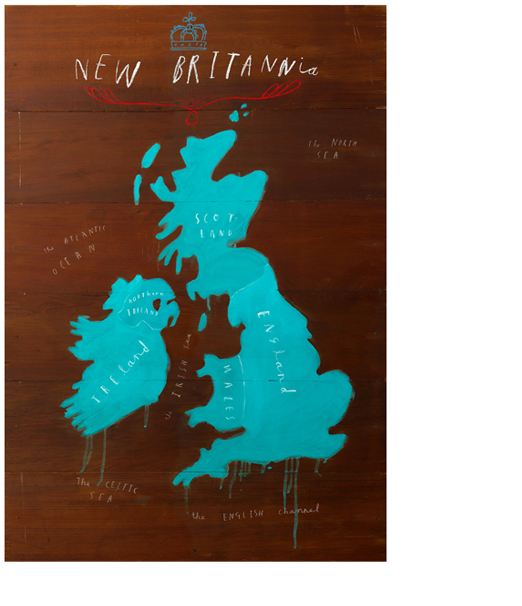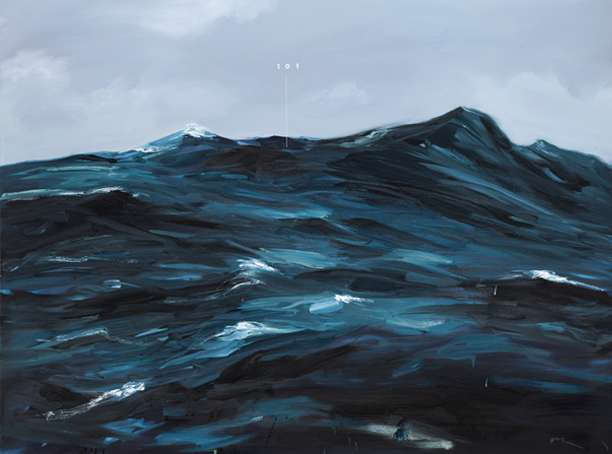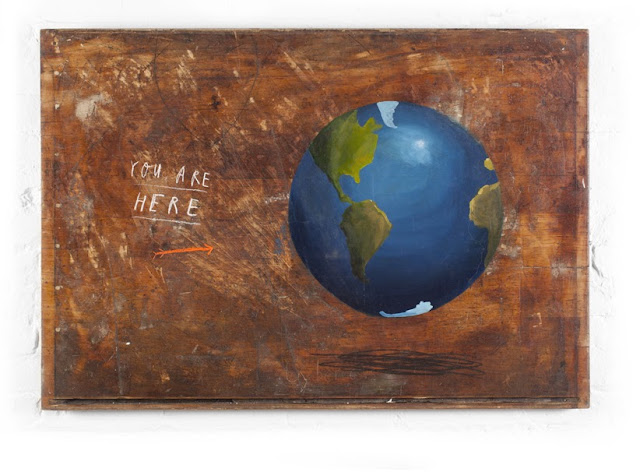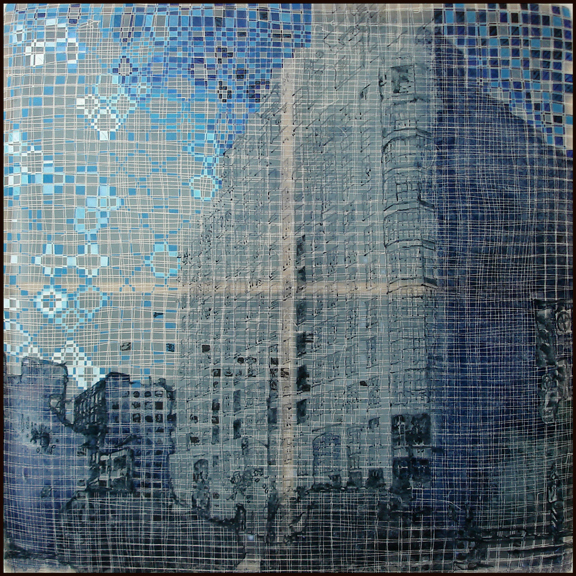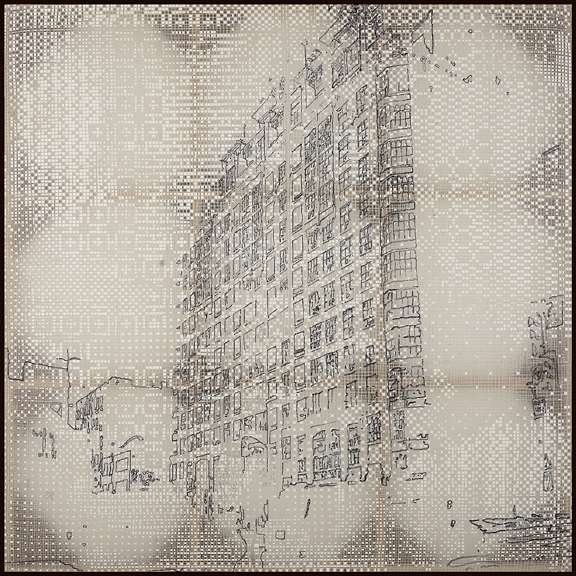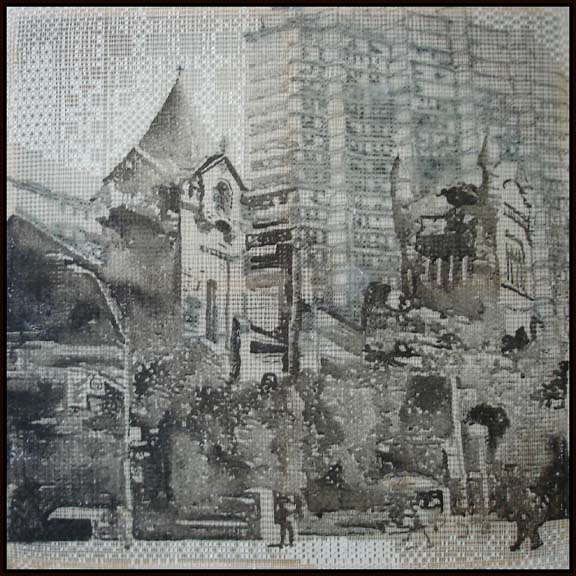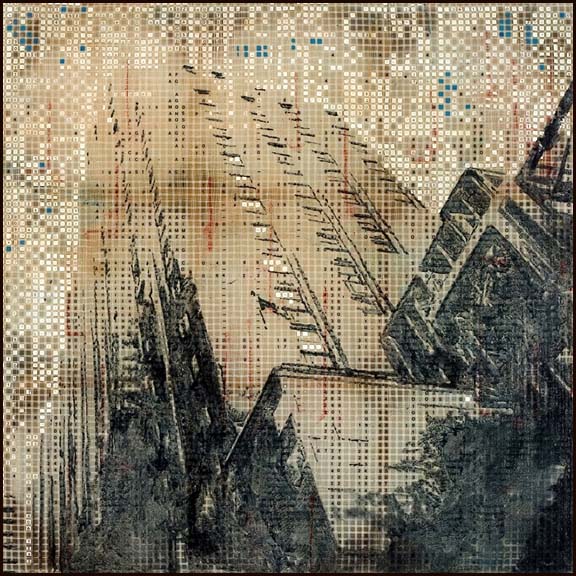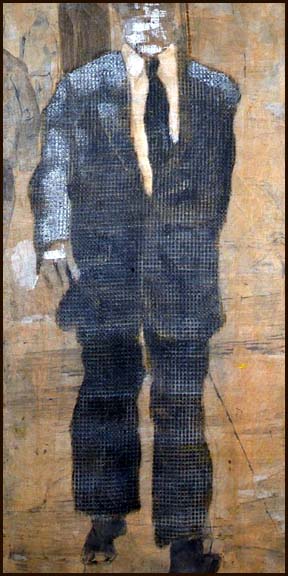The Curated Collection | Filippo Minelli
It was the simple, even austere, juxtaposition of the ethereal yet vibrant coloured smoke against the beauty of natural landscapes that first caught my breath and my attention. Stumbling upon the Silence/Shapes collection by Italian photographer Filippo Minelli felt like stumbling upon a treasure trove of modern photographic art.
Layered beneath the smoky veils of colour lies this fascinating artist’s statement:
Decontextualization of a violent tool changing quickly the surroundings, creating chaos, blinding the eyes, used in natural landscapes. The result proves that beauty can be found in clashing visions with an approach and aesthetic similar to romanticism. Showing the power of nature with the implication of religious aspects. Juxtaposing violence and beauty as a political statement.
I confess that the underlying statement about violence was lost on me until I read Minelli’s artist’s statement. For me, the striking contrast was enough to capture my admiration and attention with such arresting and unexpected beauty.
To my eye, these out-of-context, highly saturated puffs of transient colour create the kind of art I could see integrating into almost any interior space, offering a fiercely modern yet timeless edge.
What do you think of Minelli’s series? Can you envision one of his photographs in your space? What kind of energy do you think his work would bring to a room?
Happy Monday!
xo
s.



